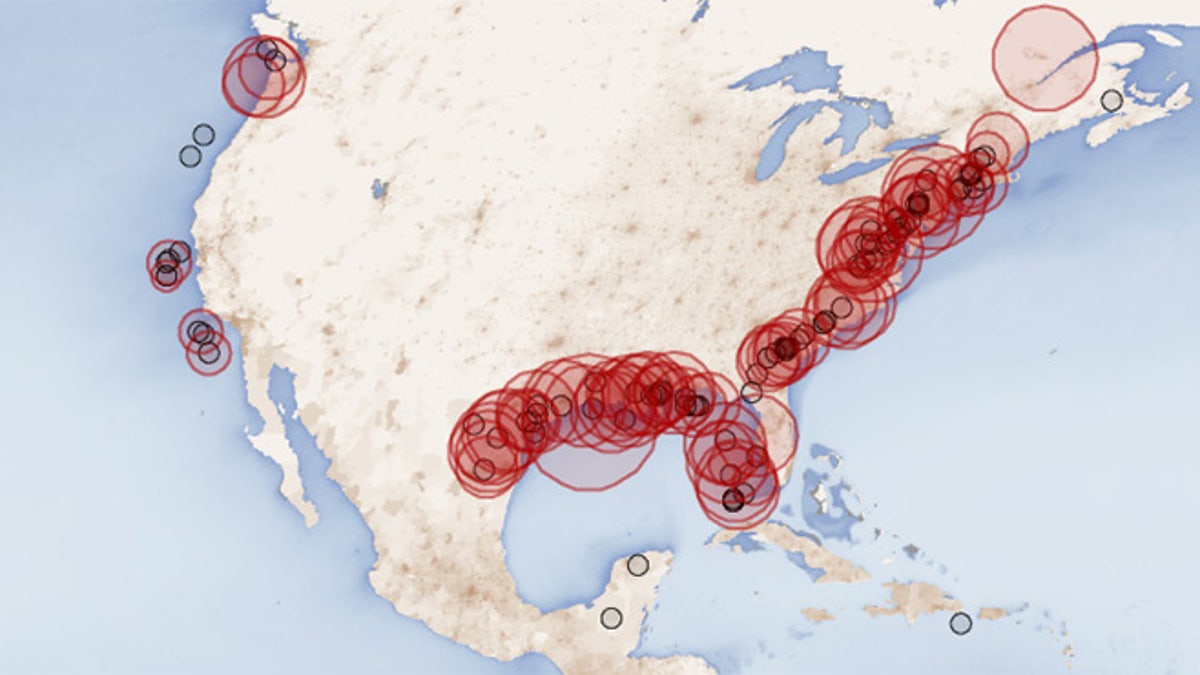
Red circles represent the known aquatic dead zones of North America. (NASA)
A giant dead zone may suffocate the Gulf of Mexico this year. A National Oceanic and Atmospheric Administration-funded forecast suggested that the dead zone could be one of the top ten ever recorded.
The dead zone could cover from 7,286 (approximately the size of Connecticut, Rhode Island and the District of Columbia combined) to 8,561 square miles (New Jersey-sized).
Last year, drought spared the Gulf from a major dead zone because less rain meant less nutrients flowing from the mouth of the Mississippi.
ANALYSIS: Dead Zone Down: Thank You Drought For Something!
Nutrient-rich waters feed algae blooms in the Gulf. When those short-lived algae die, bacteria feast on their remains, which sucks oxygen out of the water. Without oxygen dissolved in the water, marine life suffocates. These oxygen-less waters are known as anoxic zones, or hypoxic zones if there is still a tiny amount of oxygen present.
This year, heavy rains in the Mississippi River watershed flushed an estimated 153,000 metric tons of nutrients into the northern Gulf of Mexico, that’s 16 percent more than the average of the past 34 years. That feast of fertilizers and other runoff could fuel the predicted massive dead zone.
Life in Australia’s Great Barrier Reef: Photos
From July 25 to August 3, a survey cruise will physically measure the actual size of this year’s dead zone. The forecast was completed by scientists at the University of Michigan, Louisiana State University, and the Louisiana Universities Marine Consortium.
Besides the Gulf, another dead zone will choke the Chesapeake Bay this year. However, the crabs, clams and other marine life of the Chesapeake ecosystem may not have as much to worry about this year as in other seasons. Another NOAA-funded study forecast a smaller than average dead zone for the area.
